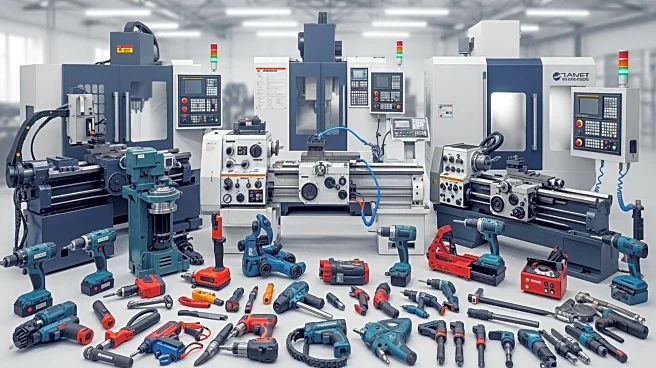What's Happening?
Zimbabwe's manufacturing sector is experiencing growth, playing a crucial role in the country's import substitution policy aimed at stimulating domestic industry. The National Development Strategy 1 (NDS1)
focuses on producing goods locally, such as tyres, fertilisers, and pharmaceuticals, while supporting small and medium enterprises (SMEs) and promoting the use of the local currency, Zimbabwe Gold (ZiG). The Zimbabwe Industrial Reconstruction and Growth Plan (ZIRGP) is a transitional framework designed to promote long-term industrial growth and reduce reliance on imports.
Why It's Important?
The growth of Zimbabwe's manufacturing sector is significant as it supports economic development and reduces dependency on imports, enhancing self-sufficiency. The import substitution strategy aims to create jobs, increase industrial output, and build economic resilience, aligning with Vision 2030 aspirations. By promoting local production, Zimbabwe can strengthen its domestic economy and improve competitiveness in regional and international markets. The focus on manufacturing also supports sustainable economic transformation, contributing to overall economic stability and growth.
What's Next?
Zimbabwe's efforts to boost its manufacturing sector will likely continue, with initiatives to enhance local production capabilities and support SMEs. The government may implement policies to improve the ease of doing business and encourage investment in manufacturing. Collaboration between the government and private sector will be crucial in achieving these goals, with potential impacts on job creation and economic growth. The success of the import substitution strategy will depend on addressing challenges related to quality, cost, and competitiveness of locally produced goods.
Beyond the Headlines
The emphasis on import substitution and manufacturing growth in Zimbabwe reflects broader economic strategies to achieve self-sufficiency and reduce reliance on foreign goods. This approach may influence regional trade dynamics and encourage other countries to adopt similar strategies. The focus on local production highlights the importance of sustainable economic practices and the potential for innovation in manufacturing. These efforts may lead to long-term shifts in economic policies and contribute to the development of a circular economy, promoting value retention and sustainable resource utilization.











